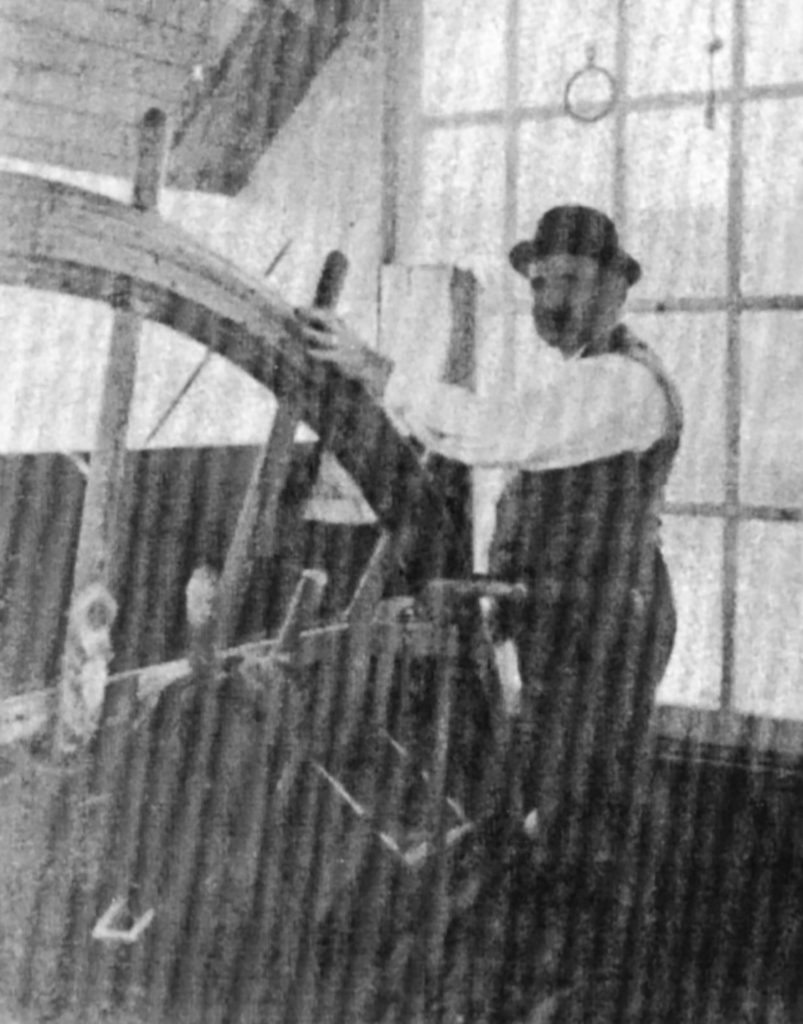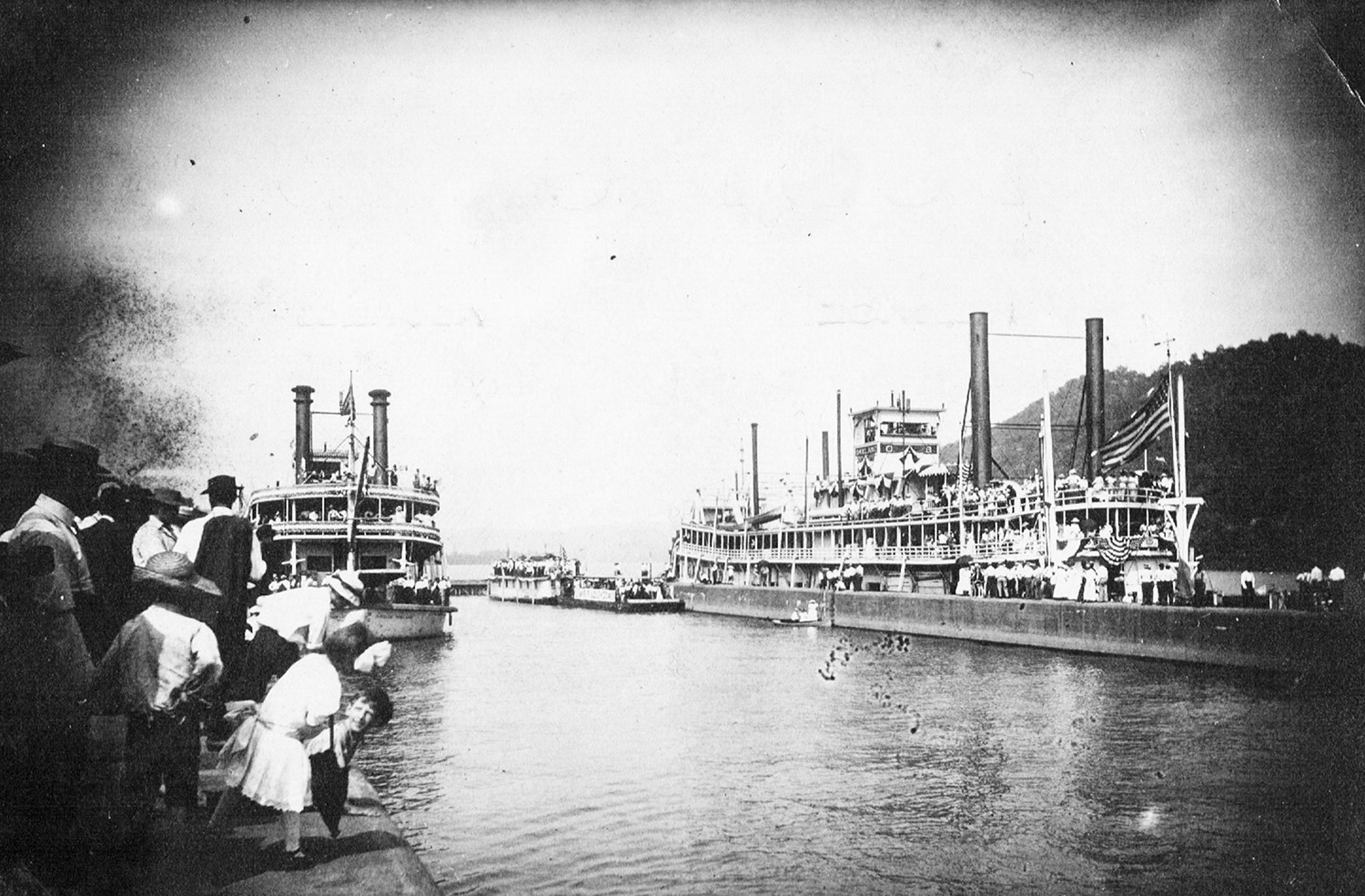
In the glory days of steam towboating, one of the best vessels of that era was the Oakland. Built at Pittsburgh in 1872 by Capt. Tom Fawcett and Capt. William “McKeesport Billy” Smith for towing coal from Pittsburgh to New Orleans, the boat was constructed on a wood hull 210 feet long, 35 feet wide and 6 feet deep. Six boilers supplied steam to engines having 26-inch cylinders with a 9-foot stroke.
Considered to be a fast boat, the Oakland once ran from Cairo to New Albany, Ind.—a distance of 400 miles including several landings—in 31 hours, an average of slightly less than 12 mph.
In 1880, the big sternwheeler was sold to the St. Louis & Mississippi Valley Transportation Company, which operated it to tow grain from St. Louis to New Orleans until 1901, when the riverboat was sold to the People’s Coal Company.
Acquired in 1907 by the Combine (also known as the Monongahela River Coal & Coke Company) the boat towed for that famous firm until 1913. The handsome steamboat participated in the opening ceremony of Ohio River Lock and Dam 11 on July 6, 1911 (107 years ago last week), near Wellsburg, W.Va. Following a rebuilding, the Oakland was renamed F.M. Wallace in 1914; the towboat made the last coal delivery for the Combine in 1916.
Early in January of that year, the Wallace collided with the towboat Val P. Collins, resulting in the loss of 10 loaded barges.
After the Combine ceased business, the Wallace worked for the Pittsburgh Coal Company until laid up in the Kanawha River at Point Pleasant, W.Va., from the autumn of 1918 until early 1920, when it was chartered to Federal Barge Line.
Various officers who served on the steamboat included Capt. Cal Blazier, Capt. John Pierce, Capt. Ben Stout and George Bower, who was chief engineer and later became a steamboat boiler inspector at St. Louis.
According to Capt. Fred Way, the Oakland was one of the towboat “immortals,” and was known for having a texas deck (replete with jigsaw railing and trim) with rooms to accommodate all of its officers and guests. The roof bell, cast by the Fulton Bell Foundry, was inscribed to honor Capt. William Smith and remained on the Wallace until it was transferred to the towboat Crucible, of which Capt. Wallace Smith, grandson of Capt. Smith, was master. The bell was moved to the diesel-powered towboat Crucible (built by Dravo in 1951), which was later renamed Bryan B, in 1966 by Merdie Boggs & Sons. The bell today is displayed in the yard of Capt. Clarence Boggs at Ashland, Ky.
The demise of the F.M. Wallace is clouded in uncertainty. In 1953, the wreck of the steamboat was reported as lying at Ames Towhead, some 14 miles below Herculaneum, Mo., on the Upper Mississippi River. However, a 1924 advertisement in The Waterways Journal offered the hull for sale by the Barrett Line of Cincinnati. Any reader having additional information is invited to contact this writer.
Editor’s note: For questions or suggestions regarding the Old Boat Column, Keith Norrington may be contacted by e-mail at curatorkeith@yahoo.com, or by mail through the Howard Steamboat Museum at P.O. Box 606, Jeffersonville, Ind. 47131-0606.




